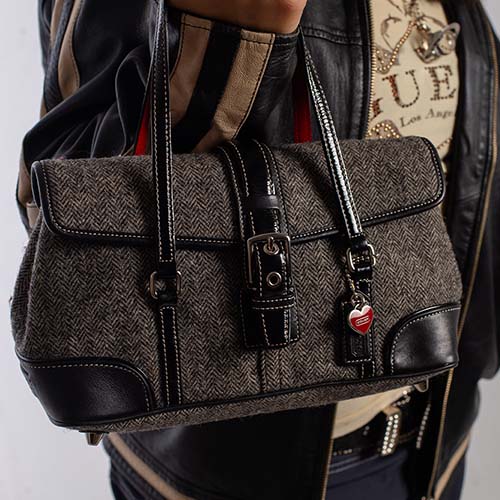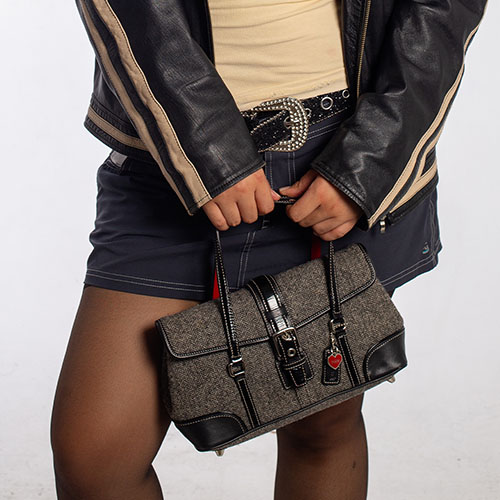Handbag
Handbags date back to ancient times, serving as practical pouches for carrying essentials. Notably, Ötzi the Iceman, dating to around 3300 BCE, was found with a pouch believed to be an early form of a handbag. In the 14th Century, the girdle pouch became popular, worn by both men and women to carry personal items. The Industrial Revolution introduced new materials and manufacturing techniques, leading to diverse handbag designs. Iconic designs emerged, such as the Hermès Kelly bag in the 1950s, named after Grace Kelly, and the Chanel 2.55, introduced in 1955.
In recent years, there’s been a notable shift towards vintage and well-worn handbags. Fashion enthusiasts are embracing pre-loved bags, valuing their history and unique character. Brands like Louis Vuitton have reissued classic designs, such as the 2003 Takashi Murakami collaboration. Modern trends emphasize practicality, with larger totes and structured “doctor bags” gaining popularity. There’s a growing emphasis on sustainable materials and ethical production, influencing both design and consumer choices.


Handbag
Handbags date back to ancient times, serving as practical pouches for carrying essentials. Notably, Ötzi the Iceman, dating to around 3300 BCE, was found with a pouch believed to be an early form of a handbag. In the 14th Century, the girdle pouch became popular, worn by both men and women to carry personal items. The Industrial Revolution introduced new materials and manufacturing techniques, leading to diverse handbag designs. Iconic designs emerged, such as the Hermès Kelly bag in the 1950s, named after Grace Kelly, and the Chanel 2.55, introduced in 1955.
In recent years, there’s been a notable shift towards vintage and well-worn handbags. Fashion enthusiasts are embracing pre-loved bags, valuing their history and unique character. Brands like Louis Vuitton have reissued classic designs, such as the 2003 Takashi Murakami collaboration. Modern trends emphasize practicality, with larger totes and structured “doctor bags” gaining popularity. There’s a growing emphasis on sustainable materials and ethical production, influencing both design and consumer choices.


Handbag
Handbags date back to ancient times, serving as practical pouches for carrying essentials. Notably, Ötzi the Iceman, dating to around 3300 BCE, was found with a pouch believed to be an early form of a handbag. In the 14th Century, the girdle pouch became popular, worn by both men and women to carry personal items. The Industrial Revolution introduced new materials and manufacturing techniques, leading to diverse handbag designs. Iconic designs emerged, such as the Hermès Kelly bag in the 1950s, named after Grace Kelly, and the Chanel 2.55, introduced in 1955.
In recent years, there’s been a notable shift towards vintage and well-worn handbags. Fashion enthusiasts are embracing pre-loved bags, valuing their history and unique character. Brands like Louis Vuitton have reissued classic designs, such as the 2003 Takashi Murakami collaboration. Modern trends emphasize practicality, with larger totes and structured “doctor bags” gaining popularity. There’s a growing emphasis on sustainable materials and ethical production, influencing both design and consumer choices.

